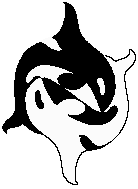Sieg, Holger . "The Effectiveness of Private Benefits in Fundraising ." Tepper School of Business (2009): Carnegie Mellon University.
This reference specifically addresses the different avenues available for fund raising, including the pros and cons of different approaches. Specifically it addresses the community involvement in private events, and the expectations of donors.
Burcaw, G. Ellis . Introduction to Museum Work . Walnut Creek, CA : AltaMira Press, 1997.
STEPS Workbook- Standards and Excellence Program for History Publications . Nashville, TN: American Association for State and Local History , 2009.
MAP Governance Assessment- Self Study Workbook . Washington DC: American Association of Museums, 2004.
This reference is vitally important, as it is the Self Evaluation Study for the specific museum I'm currently working with. It addresses financial and budget issues, community involvement issues, volunteer issues, collections issues, and public affairs protocol. The New Museum Registration Methods. Rebecca A. Buck and Jean Allman Gilmore. Washington DC : American Association of Museums , 1998.
"Helping Hands: Why Museums need Volunteers." Museum July-August (2010): 54-64.
This magazine article addresses the value of volunteers, and why museums and other cultural education resources depend on them. It's a great article, because I am specifically looking at ways to improve volunteerism within the local community.
Research Notes: Project Management. Rick Chandler, Curator, Bainbridge Island Historical Museum, 2003.
These are the personal research notes of the Curator who I am working directly under. He has extensive notes on projects he has done which are similar to that which I am designing.
Research Notes: Community Relations. Rick Chandler, Curator, Bainbridge Island Historical Museum, 1999.
These are the personal research notes of the Curator who I am working directly under. These are extensive notes regarding the community of Bainbridge Island, WA. He looks at past data involving demographics, funding, and community expectations.
Research Notes: Museum Management. Rick Chandler, Curator, Bainbridge Island Historical Museum, 2001.
These are the personal research notes of the curator who I am working directly under. These are extensive notes regarding the different roles performed by each member of the museum staff. This information is valuable, as it gives me insight into who performs what duties, and how each staff member works directly with the Board of Directors.
Research Notes: Museum Financial Management. Rick Chandler, Curator, Bainbridge Island Historical Museum, 2001.
Research Notes: Museum Interpretation and Evaluation. Rick Chandler, Curator, Bainbridge Island Historical Museum, 2001.
Lopez, Susana . "The cultural policy of the European community and its influence on museums." Museum Management and Curatorship 12, no. 2 (1992): 143-157.
Cole, Richard. "American Museum of Natural History." 2009.http://www.amnh.org/about/financial.php (accessed 08/24/10).
This website discusses the financial data from the American Museum of Natural History. While it may not be pertinent to my specific project, it is a good comparison for the smaller museums I am looking at.
"Belt Museum ." 2010.http://visitmt.com/categories/moreinfo.asp?IDRRecordID=16746&siteid=32 (accessed 08/22/10).
"Montana, Lewis and Clark: Belt." 2010.http://visitmt.com/categories/city.asp?City=Belt&SiteID=32 (accessed 08/26/10).
This website features information regarding the Belt Valley Museum, established in Belt, Montana. Since I will be using this specific museum in my studies, these Montana specific websites play a key role in my research gathering abilities.
Trulia, "Bainbridge Island Community Info." Trulia Real Estate Search. Available from htt;://www.trulia.com/real_estate/Bainbridge_Island/community-info/. Internet; accessed 25 August 2010.
This website provides a comprehensive break-down of demographic information on Bainbridge Island, WA. This will be vital, as I address issues of education, funding, volunteerism, and community activism within the island.
ePodunk, "Prifile for Belt, MT." 2007.http://www.epodunk.com/cgi-bin/genInfo.php?locIndex=27661 (accessed 20 August 2010 ).
"Seattle's Population and Demographics." 1995-2010.http://seattle.gov/dpd/research/population_demographics/Seattle_at_a_glance/default.asp (accessed 25 August 2010 ).
Mihesuah,Devon A. . Repatriation Reader: Who Owns American Indian Remains. Devon A. Mihesuah. Lincoln, NE: University of Nebraska Press, 2000.
Goldbard,Arlene. New Creative Community. Oakland, CA : New Village Press, 2006.
Kyvig,David E. and Myron A. Marty. Nearby History. 2nd ed. Exploring the Past Around You. Lanham, MD: Altimira Press, 2000.
Shaules,Joseph. Deep Culture: The Hidden Challenges of Global Living. Languages for Intercultural Communication and Education. Michael Byram and Alison Phipps . Tonawanda, NY: Multilingual Matters Ltd. , 2007.
Fiske-Risciano ,Roberta. Experiencing Race, Class, and Gender in the United States . 4th ed. Higher Education. New York, NY: Mc-Graw Hill, 2005.
This book addresses the political climate of the United States regarding sociological issues. It is an in-depth look at continuing problems within different social, ethnic, and racial classes, and how we may better address them in upcoming decades.
Feagin,Joe R. . Racial and Ethnic Relations. 5th ed. Upper Saddle River, NJ: Prentice Hall, 1996.
